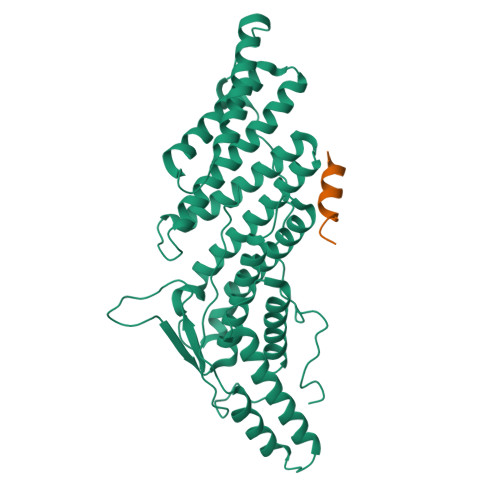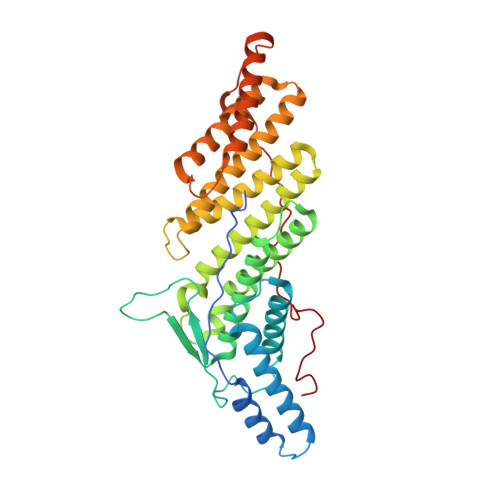A cancer-associated polymorphism in ESCRT-III disrupts the abscission checkpoint and promotes genome instability.
Sadler, J.B.A., Wenzel, D.M., Williams, L.K., Guindo-Martinez, M., Alam, S.L., Mercader, J.M., Torrents, D., Ullman, K.S., Sundquist, W.I., Martin-Serrano, J.(2018) Proc Natl Acad Sci U S A 115: E8900-E8908
- PubMed: 30181294
- DOI: https://doi.org/10.1073/pnas.1805504115
- Primary Citation of Related Structures:
5V3R, 5WA1 - PubMed Abstract:
Cytokinetic abscission facilitates the irreversible separation of daughter cells. This process requires the endosomal-sorting complexes required for transport (ESCRT) machinery and is tightly regulated by charged multivesicular body protein 4C (CHMP4C), an ESCRT-III subunit that engages the abscission checkpoint (NoCut) in response to mitotic problems such as persisting chromatin bridges within the midbody. Importantly, a human polymorphism in CHMP4C (rs35094336, CHMP4C T232 ) increases cancer susceptibility. Here, we explain the structural and functional basis for this cancer association: The CHMP4C T232 allele unwinds the C-terminal helix of CHMP4C, impairs binding to the early-acting ESCRT factor ALIX, and disrupts the abscission checkpoint. Cells expressing CHMP4C T232 exhibit increased levels of DNA damage and are sensitized to several conditions that increase chromosome missegregation, including DNA replication stress, inhibition of the mitotic checkpoint, and loss of p53. Our data demonstrate the biological importance of the abscission checkpoint and suggest that dysregulation of abscission by CHMP4C T232 may synergize with oncogene-induced mitotic stress to promote genomic instability and tumorigenesis.
Organizational Affiliation:
Department of Infectious Diseases, Faculty of Life Sciences and Medicine, King's College London, SE1 9RT London, United Kingdom.



















